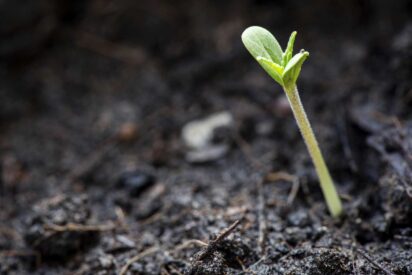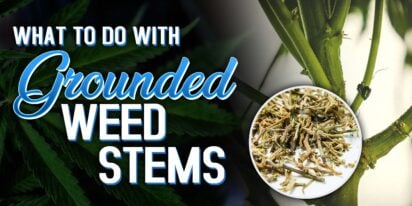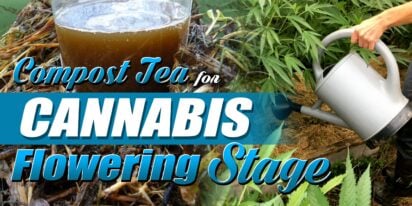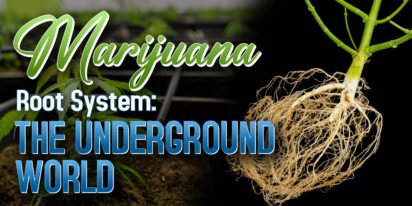
Are You 18 Or Over?
YesOr
No By clicking yes, you certify that you are over 18. By using this website, you agree to our legal disclaimer.605+ Cannabis Strains over 20 Breeders worldwide.
Table of Contents

Cannabis cultivation goes very far back to at least 3000 years ago in Taiwan. And ever since its discovery, people have been benefiting from these plants in many ways. Several genetic variations and crossbreeds have emerged as cannabis can be grown anywhere, with different strains fitting different climates and resulting in diverse effects and advantages.
One of the greatest phenomena that have come out of the extensive evolution of cannabis over recent years is the creation of autoflowing feminized seeds. These seeds are different from traditional photoperiod ones as the latter does not rely on specific light cycles or schedules from the sun to begin their flowering process. Strains of this nature include the Cannabis Ruderalis genetics, a species of cannabis that is known for growing and flowering based on their age, without any intervention, and reaching full maturity within just a few months.
Before we go into the details of the autoflowering feminized seeds grow guide, let’s review the different advantages of this cannabis variety.
Autoflowering feminized seeds have only gained recognition in the last few years. Today, they are taking the market by storm with their many benefits, including ease of cultivation, higher quality, and greater yields.
Growing these seeds are pretty straightforward, as growers can just leave these hardy and forgiving plants under a fixed light schedule from seed to harvest time. These seeds not only grow faster (around 8 to 10 weeks as opposed to sixteen weeks for photoperiods), but they also tend to produce smaller plants that won’t get taller than 50 to 70 cm. Smaller buds are known to produce more intense flavors, as evidence on many award-winning strains. And shorter plants make indoor and discreet growing easier and simpler.
With all the benefits that come from choosing autoflowering feminized seeds, it comes as no surprise that these seeds are becoming immensely popular among cannabis breeders, both novice and experienced, nowadays.
However, it is important to realize that because of their shorter lifespan, these seeds will grow and flower whether or not you are ready for them. So like everything else, successfully cultivating autoflowering feminized seeds require some preparation. Here is a week-by-week grow guide that covers all the parameters and variables of cultivating these seeds.
Proper germination and is pivotal to the development of healthy, vigorous, and productive marijuana plants. Germination takes one to three days, generally. It is during this time that your seeds will activate, grow roots, and a shoot above the surface.
During this stage of early seedling, you have a number of routes to choose from, including the traditional one of using soil. The paper towel method, however, is probably the easiest and most popular way to germinate your autoflowering feminized seeds.
To begin the germination process, moisten a paper towel on a plate. Place your seeds on the paper and cover them with a plate. This is to ensure that moisture is locked in. Certain environmental factors play a key role in germination, and in ideal situations, the seeds should sprout in a day or up to a week.
Next, prepare a suitable soil mix that is light and airy. Poke a small 10 to 15 mm hole in the soil up to an inch deep. Sow your seed directly into its one and final pot that is large enough to provide plenty of space for the roots to grow. It is important to remember that autoflowering feminized seeds are less forgiving when it comes to major stressors and mistakes, including repotting. As such, it is best to plant these seeds in their final pot right from the get-go.
By the second week, your seedling would have now emerged. As mentioned earlier, growing autoflowering feminized seeds is pretty straightforward. You do not need light schedules. Instead, you just need to leave your lights on an 18/6 schedule for the entire grow. Experts recommend growing these seeds indoors with a 250W LED light, which will provide enough power to meet your 18hr-on 6hr-off light schedule. Set the temperature at the ideal 68 to 77 degrees Fahrenheit with at least 50% to 70% humidity levels.
In addition, it is during this week that the feeding of your plants starts. Apply nutritional formulas specifically designed for the seedling. As light feeding is ideal, there is no need for additional nutrients during this period unless your plant shows signs of deficiency like yellow leaves.
By week three, your plant will be well into its vegetative phase. As you notice new fan leaves developing, you can begin adding more nutrients, increase the feeding rate, and start training your plant. The only training method you should use on these plants is the LST (Low-Stress Training). Performing this training to your plants will help boost yield during the flowering stage. Do not top, prune, or pinch your autoflowering plants.
Your plant will be nearing the flowering or bloom stage by week four. Aim for the following environmental conditions for maximum growth: 45% RH, 0.5L of water for every 24 hours, and 20 degrees Celsius air temperature. Finish off any training by this period to avoid stressing your plant when you get on the flowering stage.
As the flowering phase starts, dial in the optimal environmental conditions of 45% RH, 1l of water for every 24 hours, and 23 degrees Celsius air temperature. Also, switch the LED light settings from blue to red to encourage the budding process.
Your plants will also be requiring higher demands for their nutrition, and this includes amendments to their phosphorus, magnesium, potassium, and calcium feedings.
For the next two weeks, focus your time and energy in keeping an eye out for those yellow, banana-like structures. These “bananas” produce pollens and do not even need to open up before making seeds. Thus, it is important to remove these from the growing space immediately to prevent them from pollinating your female plants nearby. While hermaphrodites in autoflowering feminized seeds are rare, they are still worth looking out for.
In addition, conduct routine checks to search for pests and signs of nutrient deficiencies. If your plants have dried leaves, which are common during this stage of flowering, remove them to promote better airflow around your buds.
By this time, harvest season is near, and it is time to flush and defoliate your plants. Flushing is when you stop feeding your plants and only administer as much water into the soil and wait for it to dry out. Repeat the process over the next two weeks before harvesting. The goal here is to remove whatever chemicals that have been fed into the plants and create better-tasting buds. As you notice your foliage starts to discolor and turn yellow, that means you’ve successfully flushed your plants.
Autoflowering plants are generally ready to harvest by week ten. Check on your trichomes, and the majority has turned milky in color, they are ready for harvest. It is important to understand that there is no need to harvest the entire plant all at once. Some of the buds may be ripe, while the others are not. So instead of collecting them all in one go, try a progressive harvest.
As illustrated by the week-by-week autoflower seeds grow guide above, cultivating and harvesting these seeds is quick and easy. There may be many variables to cover, but if done correctly, you will be sure to reap and enjoy healthy and delicious buds in as short as ten weeks.

[ez-toc] In indoor gardening, maintaining an optimal temperature within your grow tent is crucial for the health and productivity of your plant

[ez-toc] Welcome to the delightful world of cannafudge crafting, where sweetness meets sophistication, and cannabis infusion adds a unique twis

[ez-toc] You’ve finished trimming your weed, but what about those leftover stems? Don’t throw them away! These seemingly useless bits can a

Feeling high can be an exhilarating experience, but it's essential to make the most of it by engaging in activities that enhance the sensation a

[ez-toc] Starting with planting cannabis seeds might seem simple, but how deep should cannabis seeds be planted for them to grow well. In this

[ez-toc] In the realm of cultivating cannabis, maximizing growth during the flowering stage is a top priority for growers. While various method

[ez-toc] Nutrient burn is a common issue among plant enthusiasts, often resulting from over-fertilization or improper nutrient application. It

[ez-toc] Welcome to our complete guide to dealing with harmful pathogenic mold in cannabis. For those who grow cannabis, preventing mold is vit

In recent years, there has been speculation about “did Shakespeare smoke weed?” This idea originates from a study by South African anthropol

[ez-toc] Welcome to the hidden world beneath the soil – the inside of the marijuana root system. While the vibrant leaves and resinous flower

Are You 18 Or Over?
YesOr
No By clicking yes, you certify that you are over 18. By using this website, you agree to our legal disclaimer.